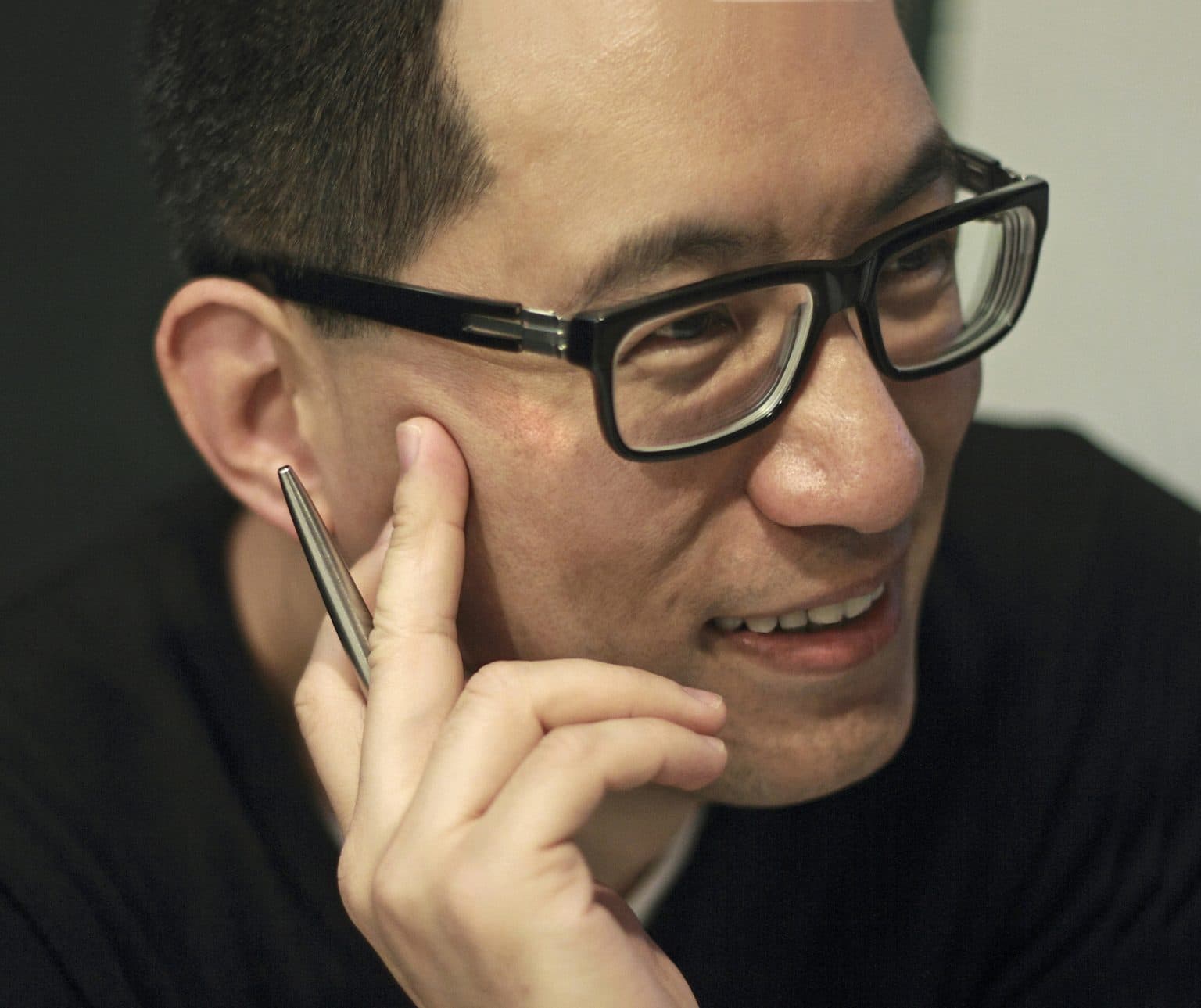WANG Jun-Jieh王俊傑
biography /
Jun-Jieh Wang was born in 1963 in Taipei, Taiwan. In 1996, Wang graduated from the HdK Art Academy in Berlin, completing a master class (supervised by Valie Export and Heinz Emigholz). In 1984, he started working with video, and became one of the pioneers of new media art in Taiwan. Jun-Jieh Wang is currently professor and chairperson at the Department of New Media Art of the Taipei National University of the Arts.
In the years from 1984 and 1989 in Taiwan, in additional to writing film, theatre and culture criticisms in the major newspapers, Jun-Jieh Wang also collaborated with famous groups such as Notes Theater, U-Theatre, Rive-Gauche and Environmental Desolation Theater Group, and provided artistic direction for works including Earthquake, October and Dr. Faustus. In 1991, at the invitation of the Hong Kong avant-garde theatre group Zuni Icosahedron, Wang and German artist Klaus Weber jointly created installation works for The Revolutionary Opera, a programme of the Hong Kong Theatre Festival, which were exhibited at the Hong Kong Cultural Centre.
Jun-Jieh Wang received the Hsiung-Shih New Artists Award in 1984 in Taiwan. In 1995, Wang received the Berlin Television Tower Award for his video installation Little Mutton Dumpling for the Thirteenth Day. In a review, Der Tagesspiegel wrote: “The Taiwanese new media artist Jun-Jieh Wang wishes….to expose the madness of advertising through irony, exaggerations and improbabilities…The commercial clip aesthetics demonstrates Far Eastern precision.” In 2000, Jun-Jieh Wang was selected by the prestigious Japanese art magazine “Bijutsu Techo” as one of “100 notable artists”. In 2002, Wang was commissioned by the Fukuoka Asian Art Museum to create the public video installation Twin Cities. In the same year, he was the subject of a 30-minute NHK documentary “Asian Who’s Who”, which was aired on NHK’s global channel. In 2009, he received the one million NTD Taishin Arts Award in the visual art category for his video installation David’s Paradise.
Jun-Jieh Wang has been active on the international contemporary art arena from an early stage. Invitations to major international exhibitions came from, among others, the American Film Institute Video Festival, the Gwangju Biennale, the Venice Biennale, the Johannesburg Biennale, “Cities on the Move” at the Vienna Secession, Taipei Biennial, the First Fukuoka Asian Art Triennale, Asia-Pacific Triennial of Contemporary Art, West Bund Biennial Shanghai, Ars Electronica Linz, Transmediale Berlin, Dogo Onsen Art and European Media Art Festival etc.
In recent years, Wang has also worked as an independent curator. In 2004, he curated “Navigator: Digital Art in the Making”, the first exhibition to introduce digital art to Taiwan on a large scale. Encompassing the classic works of digital art since the 1990s, it stimulated the discussion on technological art in Taiwan. His main work as curator and exhibition designer includes: “Faces of the Time” (National Palace Museum, 2002), “The Post-Stone Age” (Art Taipei 2005), “B!AS: International Sound Art Exhibition” (Taipei Fine Arts Museum, 2005) , “2006 Taipei Biennial: Dirty Yoga” (Taipei Fine Arts Museum, 2006) , “The Grand Illusion – International New Media Arts Festival” (Culture Gallery at National Concert Hall, 2009), “The 4th Taipei Digital Art Festival” (MOCA Taipei, 2009) , “Videonale: Dialogue in Contemporary Video Art” (National Taiwan Museum of Fine Arts, 2011), “Transjourney: 2012 Future Media Festival” (Kuandu Museum of Fine Arts, TNUA, 2012) etc.
Wang’s work in interdisciplinary theatre and design in recent years includes: serving as Staging Visual Director for the Taiwan premiere of Wagner’s complete opera cycle Der Ring des Nibelungen in collaboration with the National Symphony Orchestra, Taiwan in 2006; as Multimedia and Visual Director for the musical Turn Left, Turn Right based on Jimmy’s picture book in 2008, the closing performance of the Taipei Arts Festival (Taipei Arena); as Stage and Visual Designer for Mackay – The Black Bearded Bible Man (National Theater, 2009), Taiwan’s first original opera sung in Taiwanese dialect; co-directing the technological media theatre work L’Après-midi de la Gravité with Wang Chia-Ming in 2010; directing unmanned technological media theatre Sin City in 2013 and creating The Night of Sodom (Taipei Fine Arts Museum, 2015).
畢業於德國國立柏林藝術學院 (HdK Berlin)獲卓越藝術家最高文憑(指導教授為Valie Export與Heinz Emigholz)。1984年起開始從事錄像藝術創作,為台灣新媒體藝術的開創者之一。現專任於國立臺北藝術大學新媒體藝術學系教授並兼系主任 。
1984年獲台灣「雄獅美術新人獎」。1995年獲德國「柏林電視塔藝術獎」。2009年獲「台新藝術獎」年度視覺藝術大獎。2000年獲日本著名美術雜誌「美術手帖」推選為「最受注目的100位藝術家之一」。2002年為日本福岡亞洲美術館製作公共錄像裝置作品《雙城記》,同年並獲日本NHK電視台製作三十分鐘記錄專輯於「亞洲名人錄」(Asian Who’s Who)全球頻道播映。
重要國際邀展包括:「美國電影中心錄像展」(1989)、「光州國際雙年展」(1995)、「威尼斯雙年展」(1997)、「約翰尼斯堡國際雙年展」(1997)、「移動中的城市」(維也納分離主義藝術中心,1997)、「1998台北雙年展:慾望場域」(2000)、「亞洲藝術三年展」(1999)、「亞太當代藝術三年展」(1999)、「無法無天:2000台北雙年展」(2000)、「亞細亞散步」(2002)、「林茲電子藝術節」(2013)、「上海西岸雙年展」(2013)、「柏林超媒體藝術節」(2014)、「日本道後溫泉國際藝術節」(2014)、「歐洲媒體藝術節」(2016)、「光·合作用」(2017、2019)、「覺醒:亞洲的藝術介入社會1960-1990s」(2018)等。
王俊傑近年來亦擔任獨立策展人工作,2004年策劃「漫遊者-國際數位藝術大展」,為台灣首次大規模引介國際數位藝術的展覽,該展涵蓋了自九十年代以來的重要數位藝術經典作品,開啟了科技藝術在台灣的後續探討熱潮。重要獨立策展包括:「時代的容顏」(台北故宮博物院,2002)、「漫遊者-國際數位藝術大展」(國立台灣美術館,2004)、「後石器時代」(畫廊博覽會,2005)、「異響-國際聲音藝術展」(台北市立美術館,2005)、「2006台北雙年展:(限制級)瑜珈」(台北市立美術館,2006)、「台北數位藝術節」(台北當代藝術館,2009)、「Videonale-當代國際錄像藝術對話」(國立台灣美術館,2011)、「超旅程-2012未來媒體藝術節」(關渡美術館,2012)、「再基地–當實驗成為態度」(臺灣當代文化實驗場,2018)等。
近期參與多項跨領域新媒體劇場作品:2010年與王嘉明共同執導媒體劇場《萬有引力的下午》;2013年導演科技媒體無人劇場《罪惡之城》;2015年導演《索多瑪之夜》。跨域劇場視覺設計作品包括:華格納歌劇《帕希法爾》(國家交響樂團,2018)、普契尼歌劇《杜蘭朵》(德國萊茵歌劇院,2015)、華格納歌劇《尼貝龍指環》(國家交響樂團,2006)、《雙姝怨》(國家實驗劇場,2007)、幾米繪本《向左走向右走》大型音樂劇(台北小巨蛋,2008)、首部台語歌劇《黑鬚馬偕》(國家戲劇院,2008)等。
